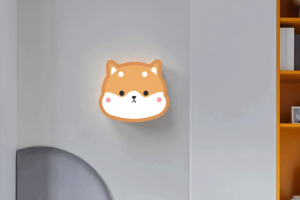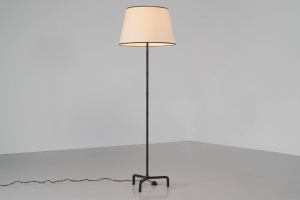Enhance Your Outdoor Space with Effective Lighting

Outdoor lighting serves multiple essential functions for residential, commercial, and public properties. It enhances aesthetic appeal by highlighting architectural features, landscaping, and outdoor living spaces, creating a welcoming atmosphere. Safety and security are improved through illumination of pathways, driveways, and entryways, reducing accident risks and deterring potential intruders.
Outdoor lighting Woolerdesign also extends the usability of outdoor spaces, enabling evening gatherings and activities. In commercial settings, well-designed outdoor lighting attracts customers, creates positive first impressions, and enhances the overall customer experience. It increases visibility of signage and storefronts, improving brand recognition and drawing attention to businesses.
For public spaces like parks, plazas, and walkways, outdoor lighting contributes to a sense of community and safety, encouraging social gatherings and outdoor enjoyment. It also promotes nighttime activities and events, adding to the vibrancy of the community. Overall, outdoor lighting is a crucial element for both residential and commercial properties, significantly contributing to aesthetics, safety, functionality, and the overall appeal of outdoor spaces.
Its importance extends beyond individual properties to enhance entire communities and public areas.
Types of Outdoor Lighting
Pathway and Flood Lighting
Pathway lighting is a common type of outdoor lighting, designed to illuminate walkways, driveways, and garden paths. These fixtures are typically low to the ground and provide a soft, diffused light to guide people along pathways safely. Floodlights, on the other hand, emit a broad beam of high-intensity light, often used for security purposes or to highlight specific architectural or landscape features.
Wall-Mounted and String Lighting
Wall-mounted sconces are another popular option for outdoor lighting, providing both ambient and task lighting while adding a decorative element to exterior walls. String lights are a versatile and decorative option for outdoor spaces, creating a festive and inviting atmosphere for gatherings and events.
Specialized Outdoor Lighting Options
In addition to these traditional types of outdoor lighting, there are also more specialized options available. Underwater lights can be used to illuminate ponds, fountains, or swimming pools, creating a stunning visual effect. Step lights are designed to be installed on stairs or steps to improve safety and visibility in these areas. Landscape spotlights are used to highlight specific trees, shrubs, or architectural elements in the landscape, adding drama and interest to the outdoor environment.
Choosing the Right Lighting Fixtures
When choosing outdoor lighting fixtures, it is important to consider several factors to ensure that they meet the specific needs and aesthetic goals of the space. Firstly, it is essential to consider the intended purpose of the lighting, whether it is for security, safety, accentuating architectural features, or creating ambiance. Different types of fixtures are designed for different purposes, so it is important to select fixtures that are suitable for the intended use.
Additionally, it is important to consider the style and design of the fixtures to ensure that they complement the overall aesthetic of the property. Whether traditional, modern, or rustic, there are outdoor lighting fixtures available to suit various design preferences. Another important consideration when choosing outdoor lighting fixtures is the durability and weather resistance of the materials.
Since outdoor fixtures are exposed to the elements, they need to be able to withstand harsh weather conditions such as rain, snow, and UV exposure. It is important to select fixtures made from high-quality materials such as aluminum, stainless steel, or brass that are designed to withstand outdoor conditions. Furthermore, it is important to consider the energy efficiency of the fixtures by choosing LED or solar-powered options that can help reduce energy consumption and lower utility costs.
Overall, choosing the right outdoor lighting fixtures involves considering the intended purpose, design aesthetic, durability, and energy efficiency.
Placement and Design Tips for Outdoor Lighting
Proper placement and design of outdoor lighting are essential for achieving the desired aesthetic and functional effects. When planning the placement of outdoor lighting fixtures, it is important to consider the natural features of the landscape and architecture to determine where light is needed most. Pathway lighting should be strategically placed along walkways and driveways to ensure safe navigation at night.
Additionally, accent lighting should be used to highlight architectural features such as columns, arches, or facades to create visual interest and drama. It is also important to consider the balance of light and shadow to create a dynamic and visually appealing outdoor environment. In terms of design tips for outdoor lighting, it is important to create layers of light by combining different types of fixtures such as wall sconces, pathway lights, and spotlights.
This creates depth and dimension in the outdoor space while providing adequate illumination for different purposes. Additionally, it is important to consider the color temperature of the light to create the desired ambiance. Warm white light creates a cozy and inviting atmosphere, while cool white light can create a more modern and crisp look.
Furthermore, it is important to avoid over-lighting or under-lighting by carefully planning the number and placement of fixtures to achieve a balanced and harmonious effect. Overall, proper placement and design of outdoor lighting are crucial for creating a visually appealing and functional outdoor environment.
Energy-Efficient Outdoor Lighting Options
In recent years, there has been a growing emphasis on energy-efficient outdoor lighting options that can help reduce energy consumption and minimize environmental impact. One popular option for energy-efficient outdoor lighting is LED (light-emitting diode) fixtures. LED lights consume significantly less energy than traditional incandescent or halogen bulbs while providing bright and long-lasting illumination.
They also have a longer lifespan, reducing the need for frequent bulb replacements. Additionally, solar-powered outdoor lighting has become increasingly popular as it harnesses solar energy during the day to power lights at night without relying on electricity from the grid. Another energy-efficient option for outdoor lighting is motion-activated or photocell-controlled fixtures that only turn on when needed.
These fixtures are designed to conserve energy by only illuminating when motion is detected or when ambient light levels drop below a certain threshold. This not only reduces energy consumption but also enhances security by alerting homeowners to potential intruders. Furthermore, low-voltage outdoor lighting systems are an energy-efficient option that operates at 12 volts instead of the standard 120 volts used in traditional lighting systems.
This reduces energy consumption while still providing adequate illumination for outdoor spaces. Overall, there are various energy-efficient outdoor lighting options available that can help reduce energy costs and minimize environmental impact.
Safety and Security Considerations for Outdoor Lighting
Preventing Accidents with Proper Illumination
Properly illuminated pathways and entryways can significantly reduce the risk of accidents by providing clear visibility at night. To achieve this, it is essential to ensure that pathways are well-lit with evenly spaced fixtures, guiding people safely from one point to another.
Deterrent to Potential Intruders
Well-lit entryways can also serve as a deterrent to potential intruders by eliminating dark hiding spots around doors and windows. Motion-activated lights can be an effective security measure, alerting homeowners to any movement around their property.
Design Considerations for Safety and Security
When designing outdoor lighting with safety and security in mind, it is crucial to avoid creating glare or harsh shadows that can impede visibility or create potential hiding spots for intruders. Instead, shielded fixtures that direct light downward without causing glare or light pollution should be used. The color temperature of the light is also an important consideration, as warmer tones can create a more inviting atmosphere while still providing adequate visibility for safety and security purposes.
Maintenance and Care for Outdoor Lighting Fixtures
Proper maintenance and care are essential for ensuring that outdoor lighting fixtures continue to function effectively and look their best over time. Regular cleaning of fixtures is important to remove dirt, debris, and other contaminants that can accumulate on surfaces and affect light output. It is important to follow manufacturer’s guidelines for cleaning materials and methods to avoid damaging finishes or components.
Additionally, it is important to inspect fixtures regularly for any signs of wear or damage such as corrosion, loose connections, or cracked lenses. In addition to regular cleaning and inspection, it is important to replace bulbs as needed to maintain optimal illumination levels. LED bulbs have a longer lifespan than traditional bulbs but will eventually need replacement as well.
It is also important to check electrical connections and wiring periodically to ensure that they are secure and free from damage or corrosion. Furthermore, it is important to trim back vegetation around fixtures to prevent obstruction of light output or damage from overgrowth. Overall, proper maintenance and care for outdoor lighting fixtures are essential for preserving their functionality and appearance over time.
In conclusion, outdoor lighting plays a crucial role in enhancing the beauty, safety, and functionality of residential and commercial properties. There are various types of outdoor lighting fixtures available to suit different purposes and design preferences while considering factors such as durability and energy efficiency is essential when choosing the right fixtures. Proper placement and design of outdoor lighting are crucial for creating a visually appealing and functional outdoor environment while energy-efficient options can help reduce energy consumption and minimize environmental impact.
Safety and security considerations should be integral parts of outdoor lighting design while proper maintenance and care are essential for preserving the functionality and appearance of fixtures over time. Overall, outdoor lighting is an indispensable element that contributes to the overall appeal and functionality of any property.




